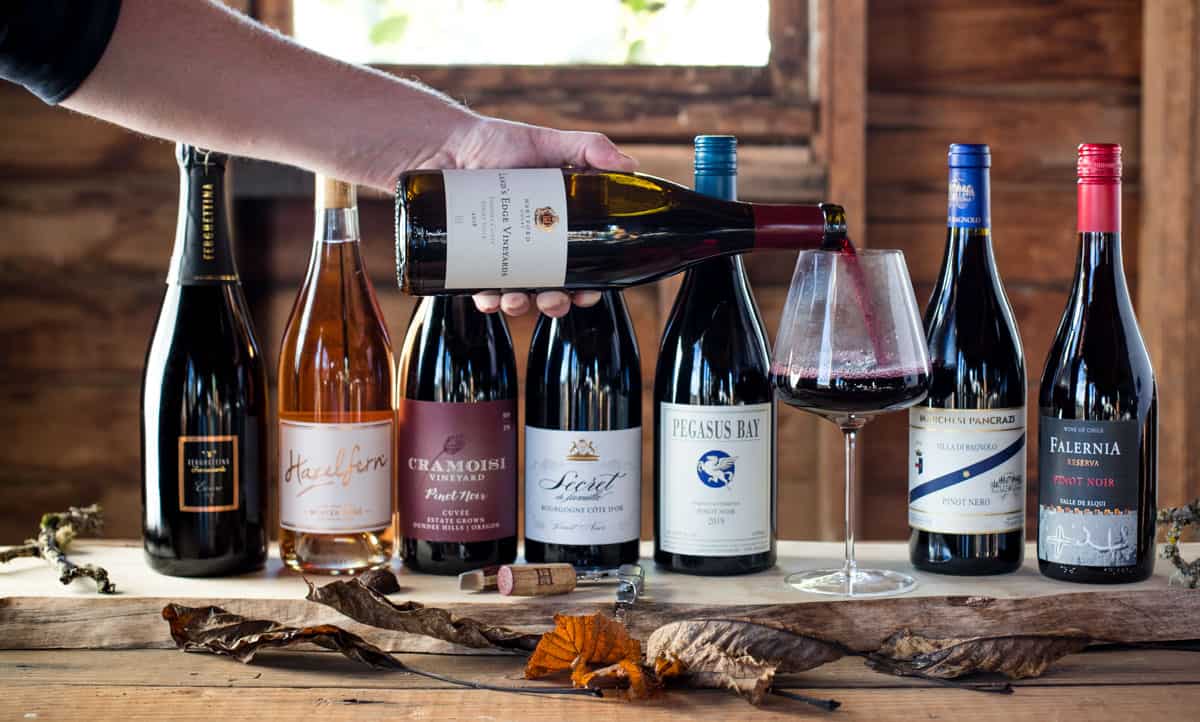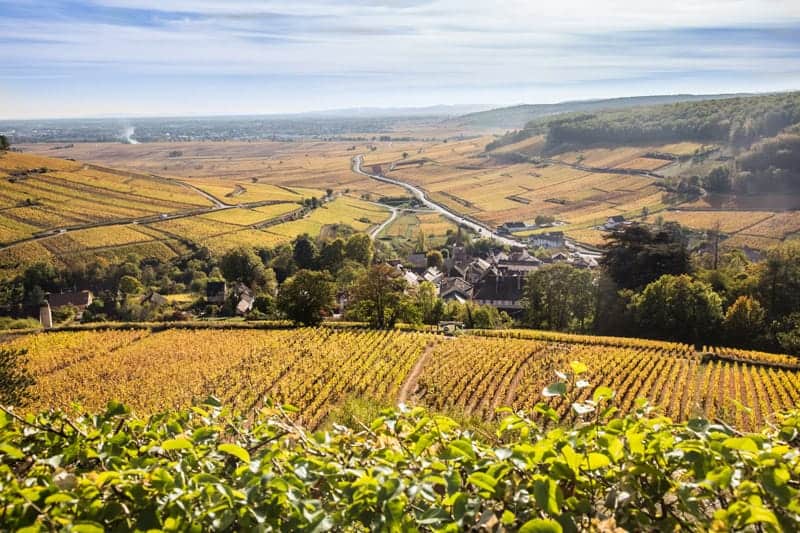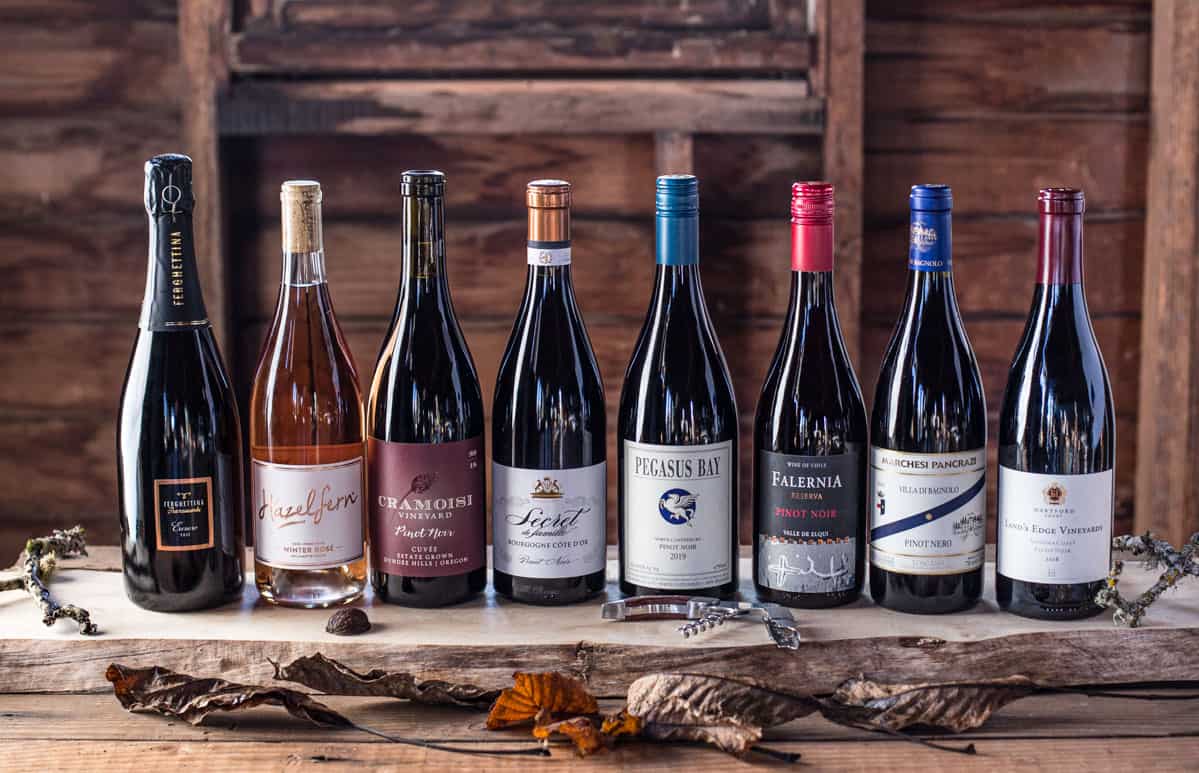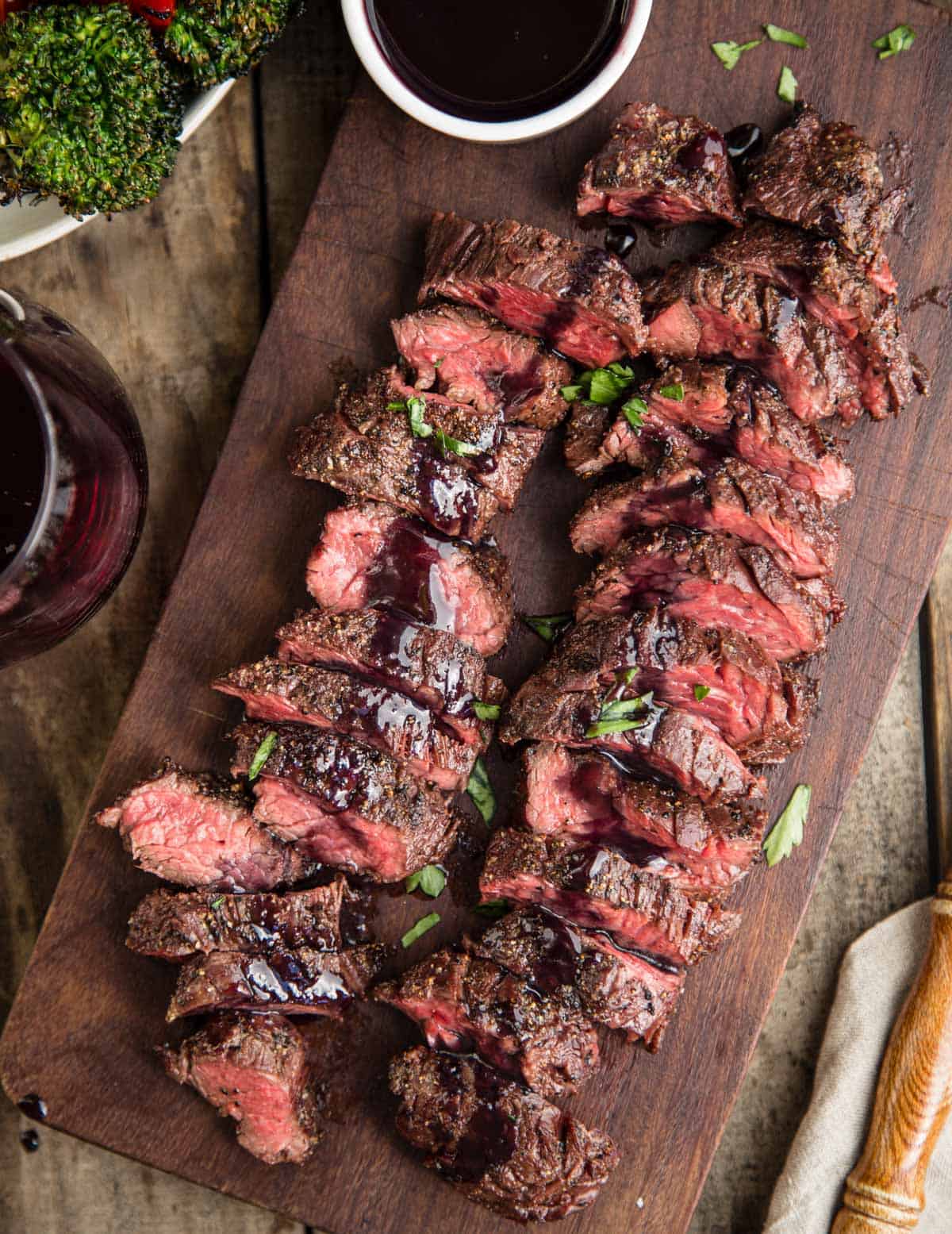Pinot Noir is one of the most popular and most beloved red wines of all time. Winemakers describe it as a challenging and finicky grape to grow. But wine enthusiasts across the world love Pinot Nor for its delicate nature, elegance, light-medium body, gorgeous red fruit and spicy aromas, and deep complexity. Find out why this wine is such a big deal!

Loved and admired by sommeliers and enthusiasts across the globe, and a favorite of wine collectors, people are wild about great Pinot Noir, and consider it one of the world’s best wines.
[feast_advanced_jump_to]
What is Pinot Noir – A Quick Rundown
- Pinot Noir (pronounced PEE-no no-AHR) is a thin-skinned red grape variety producing wines with high acidity and low to subtle tannins.
- The name comes from the French words “pine” (pinot) indicative of the grape clusters that grow in a cone shape, and “black” (noir) indicting the dark color of the grapes.
- It originated in Bourgogne (Burgundy), France, but also grows throughout the world in cooler climates like our home state of Oregon.
- The wines go from light to medium bodied and ranges in style from light, fruity to bold and complex with long-term aging abilities.
- In France, Pinot Noir is labelled by the region where it’s grown, Burgundy (or Bourgogne as its referred to in France), and Champagne where it is one of the permitted grapes grown.
- Speaking of Champagne, it’s one of the 3 major grape varieties that go into Champagne. If you see a Champagne labeled Blanc de Noir, you can bet it’s Pinot Noir (and often with some Pinot Meunier blended in as well).
- Pinot Noir can be made into still red wines, white wines, rosé, and sparkling. It’s that versatile!

How to Taste Wine
Follow these steps to learn more about the wine you are tasting:
1. Hold the glass straight in front of you by the stem and look at it. Notice the clarity, color, and viscosity of the wine.
2. Give the wine a swirl to release the aromas. Smell for notes of fruit, flowers/herbs, earth/minerals, spice and others.
3. Take a sip of wine and swish it in your mouth. Allow it to touch all parts of your palate. Focus on how it changes in your mouth. What stands out? Are the notes similar to those of the nose?
The more you know the characteristics you do and don’t like in a wine, the better you will be at choosing wines you will like. Learn more in our Wine Tasting 101 post and in Chapter 2 of our Fire + Wine Cookbook.
Flavor Profile: What does Pinot Noir Taste Like
Typical descriptors will include:
- Earth: leather, mushrooms, wet soil
- Fruit: red berries (cherries, cranberries, strawberries, raspberries), and black berries
- Spice: vanilla, cinnamon, clove, tobacco, caramel
French Pinot Noir, specifically those from Burgundy, takes on more earthy, and floral tones due to the regions terroir. The fruit in these wines is more subtle and nuanced vs. its New World counterparts. You’ll find some sweet black cherries, mushrooms and wet soil from this region. Many of these wines can age for decades, allowing them to slowly evolve.
The best California Pinot Noirs are grown in some of the cooler pockets of the state, benefiting from coastal fog (places like Sonoma Coast, Russian River Valley, Carneros, Anderson Valley), and tend to be more bold, rich, and fruity in style, often with some noticeable tannins.
Oregon Pinot Noir tends to be more elegant and subtle than its California counterparts, but richer and fruitier than Burgundy. For me, it’s the perfect balance between those two regions.
Notable Regions where Pinot Noir is Grown
Pinot Noir is known as a finicky grape that requires a cool-climate, specific soils (ideally clay and chalky soils), and long growing seasons for the most successful grapes to thrive.

France
One of France’s oldest grapes, Bourgogne (Burgundy) is known as the birthplace of Pinot Noir, and where some of the most sought after and most expensive bottles come from.
In Champagne, it is one of the major grapes permitted in the sparkling wines made here. You’ll also find some Pinot Noir in the Loire Valley (in red and rosé Sancerre).
United States
- Oregon: Pinot Noir makes up nearly 60% of all the plantings in Oregon. The Willamette Valley is practically synonymous with Pinot Noir, where it makes up 70% of the plantings here. The Willamette Valley is also on the same latitude as Burgundy and has a similar climate and growing conditions to the grape’s birthplace. You’ll find Pinot in all forms here (red, white, rosé and sparkling).
- California: Look for those from cooler and foggy areas, like Russian River Valley, the Sonoma Coast, Anderson Valley, and Central Coast.
Other Notable Regions
- New Zealand: Where you’ll find elegant and bright fruit-dominant styles.
- Germany: Where it is called Spätburgunder and is the most planted red grape in the country.
- Italy (where it’s also called “Pinot Nero”), Australia, Chile, and South Africa.

Styles of Pinot Noir
- Red
- White
- Rosé
- Sparkling
Pairing Pinot Noir with Food
Pinot Noir comes in a wide variety of styles (from very light and delicate, to spicy and bold), and is known for its low tannins and high acidity making it an excellent match for a wide variety of foods. Many like to pigeonhole these wines into pairing with salmon. And while they are indeed a great match for salmon of all kinds, they can certainly hold up to pork, vegetables, duck, and even a good steak. Yes, that’s right. Depending on the style, even Pinot can pair with a great grilled steak!

Recipes to Pair
The following recipes are great for pairing. They also represent a variety of protein types to show off the versatility of this dynamic wine.
- Perfect Grilled Salmon
- Smoked Coq au Vin
- Grilled Hanger Steak with Red Wine and Marionberry Glaze
- Grilled Mushroom Crostini
- Rack of Lamb
- Smoked Pork Chops – Reverse Seared
The post Pinot Noir Wine Guide appeared first on Vindulge.


